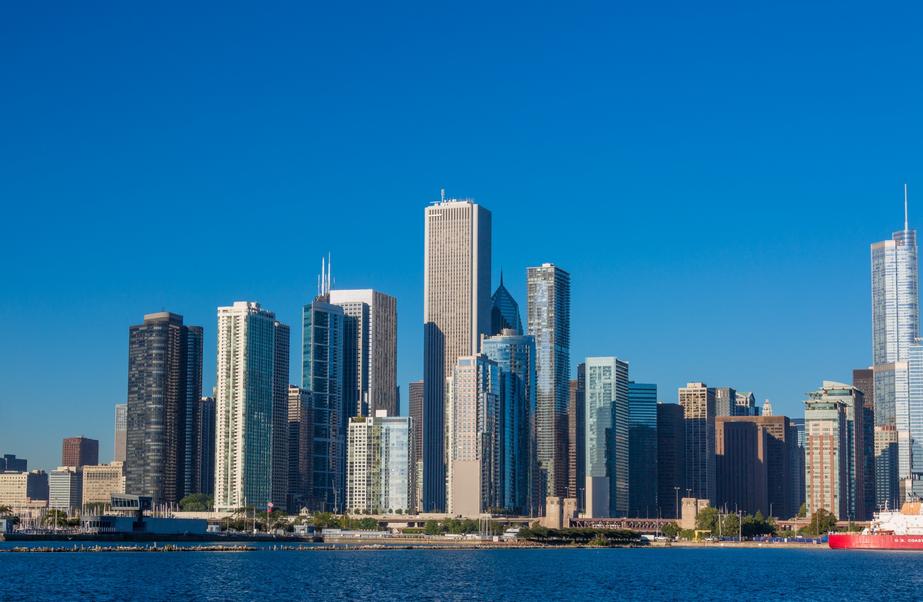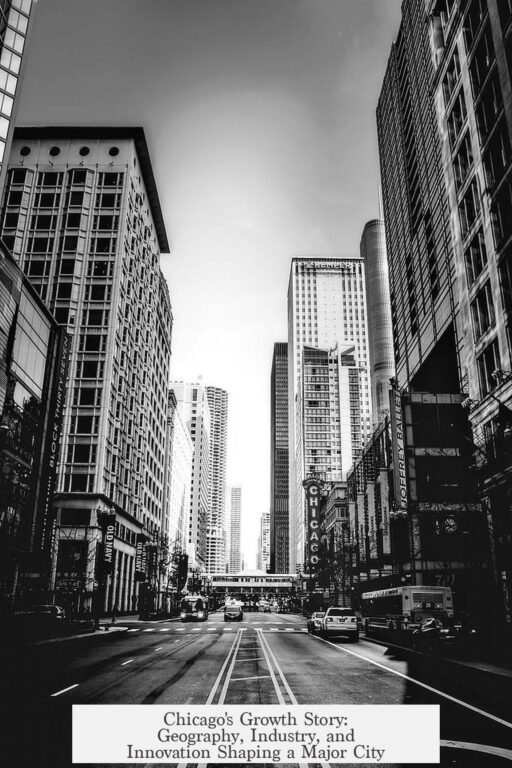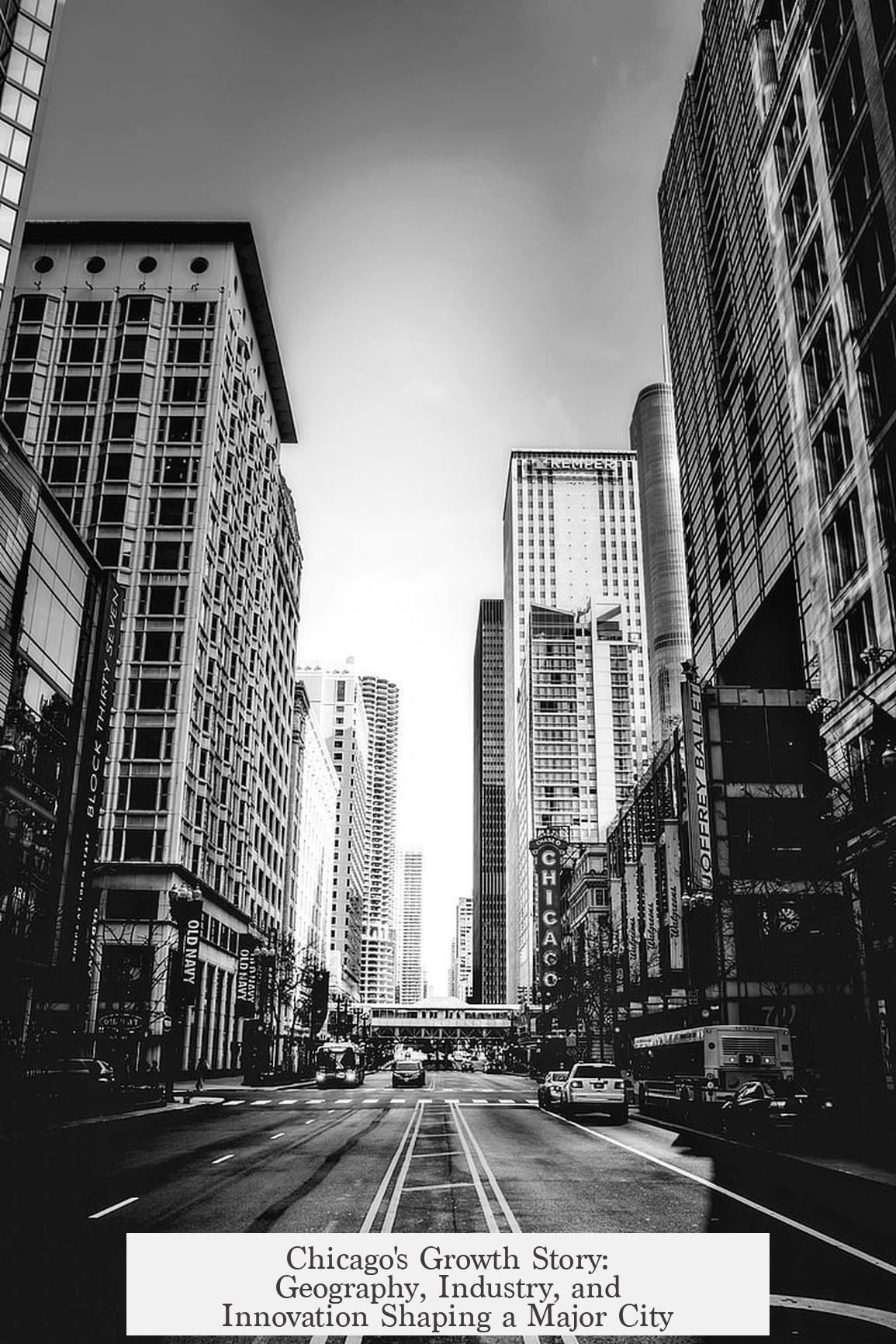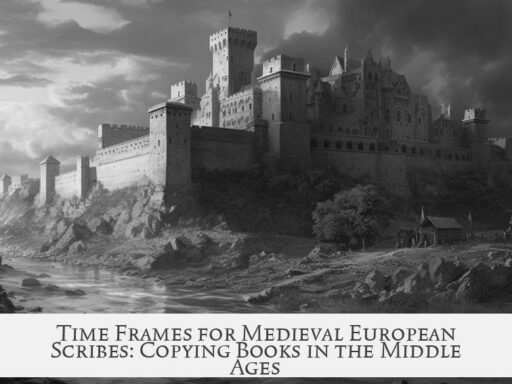Chicago’s growth stems from its strategic geographical location, transportation networks, and diverse industries that converged to shape its economic power.

The city’s position near the southern tip of Lake Michigan offers access to the Great Lakes, vital for shipping raw materials and products. This location connects the Great Lakes system to the Mississippi River basin via a short portage, linking interior North America to the East Coast through waterways. The 1825 completion of the Erie Canal strengthened this connection by enabling goods to flow from the Atlantic into the continent’s interior.
In that same year, 1848, Chicago gained its first railroad, which expanded rapidly with additional lines by 1855. These railroads connected Chicago to Michigan, southern Illinois, and other surrounding regions. The city thus became a major transportation hub with four modes of transport intersecting: lake shipping, rivers, canals, and railroads. Cargo often required transfer between different transport types in Chicago, which positioned the city as a classic entrepôt.

An entrepôt is a central location where goods switch from one mode of transport to another. Chicago’s role as an entrepôt catalyzed industrial growth since factories could add value by processing goods before re-exporting them. This system attracted investment and stimulated many industries.
One notable sector that thrived in Chicago was the meatpacking industry. Cattle were driven to railheads and shipped to Chicago’s Union Stockyards. Advances in refrigeration and rail technology enabled Chicago to pioneer large-scale industrial meat packing, with companies like Armour and Swift rising to prominence. The Civil War accelerated this growth because the Union’s demand for meat surged, and the Confederate blockade of the Mississippi River forced western supplies to route through Chicago’s rail network.

Besides transportation advantages, Chicago sits at ecological crossroads. On one side lie the forests of Michigan and Wisconsin; on the other, the prairie lands ideal for agriculture. This juxtaposition supported diverse resource flows: timber was processed into building materials and shipped westward, while grains and livestock from the plains were transformed into packaged foods for eastern markets.
Natural resources also fueled Chicago’s industrial base. Iron ore from Minnesota, coal from southern Illinois, and limestone from the Ohio Valley combined to establish the city and nearby Northwest Indiana as premier steel-producing centers worldwide.

Chicago’s economic base diversified as its trade infrastructure matured. Even after some original industries declined, the city’s warehousing and distribution capabilities remained critical, adapting to new technologies like air transport. Manufacturing shifted towards machine tools and high-skill production, maintaining Chicago’s industrial relevance amid global changes.
Moreover, Chicago developed significant advertising, marketing, and business services. These sectors grew out of supporting 19th-century industries and now form the foundation of a broad, multifaceted economy. This diversification protects the city from reliance on a single economic engine.

| Key Factor | Impact |
|---|---|
| Geographical Location | Connected Great Lakes and Mississippi River, enabling extensive trade routes |
| Transportation Hub | Four transport modes intersecting; critical transfer point for goods |
| Entrepôt Function | Industrial and processing facilities developed to add value to transferred goods |
| Meatpacking Industry | Rail access and refrigeration enabled large-scale meat production, boosting economy |
| Ecological Boundaries | Access to timber, agriculture, and mineral resources supported diverse industries |
| Steel Production | Proximity to iron, coal, and limestone made Chicago a steel manufacturing hub |
| Diversified Economy | Warehousing, manufacturing, marketing services sustained modern growth |
- Chicago’s location links major waterways, creating a natural trade crossroads.
- The convergence of lakes, rivers, railroads, and canals formed a vital transport hub.
- Chicago functioned as an entrepôt, encouraging industrial processing and manufacturing.
- The meatpacking industry thrived due to transportation and technological advances.
- Local ecology provided diverse resources, supporting industries like timber and steel.
- The city evolved with an economy that includes warehousing, manufacturing, and services.
How Did Chicago Grow as It Did? A Journey Through Geography, Industry, and Innovation
Chicago’s spectacular growth boils down to one key fact: its unique position and role as a major transportation and industrial hub. More than just luck, it envelops geography, transportation breakthroughs, ecological riches, and industry ingenuity. Let’s unpack this tale step by step.

The Power of Location: Where the Lakes Meet the Rivers
First, you can’t talk Chicago without highlighting Lake Michigan. This is no ordinary lake—it’s part of the Great Lakes, a colossal freshwater system that shaped the region like a sculptor with clay. The city sits at the southern tip where the Great Lakes dip into the North American continent, ideal for commerce.

What’s essentially amazing is the natural “portage” nearby, allowing early voyageurs—those daring French fur traders—to connect waters leading to the mighty Mississippi River system. Picture Chicago as a gateway between the East Coast via the Great Lakes and the vast interior of the continent through the Mississippi.
Then came the 1825 Erie Canal, linking these waters further east to the Atlantic, opening a new doorway. Suddenly, goods weren’t just stuck near the lakes; they flowed inland and outward more freely.
Better yet, 1848 ushered in the first railroad to Chicago—just in time to supercharge trade. By 1855, multiple railroad lines crisscrossed the city, including vital continental routes from Michigan and southern Illinois. These four forms of transport—lakeboats, canals, rivers, and railroads—didn’t just pass through; they converged. And convergence often means opportunity.
An Entrepôt Extraordinaire: The Magic of Moving Stuff
What’s an entrepôt? It’s a fancy word, but the idea is simple: it’s a place where goods transition from one transport mode to another. Think of it as a giant, bustling transfer station. But there’s more. When cargo has to stop anyway, why not add value before shipping it further?
Chicago seized this moment brilliantly. Factories and processing plants sprouted around the docks and rail yards. Instead of just a waypoint, the city became a production powerhouse. Adding value right at the crossing point was genius. Smart business turned logistics into profits.
The Meatpacking Marvel: How Chicago Fed a Nation
Although Chicago didn’t jump into every industry, its role in meatpacking was unforgettable. Cattle from the Midwest were herded to railheads, then shipped to the famous Union Stockyards in Chicago. There, animals were sold and sent east. But wait, it gets better.
Technological advancements like refrigeration and efficient rail lines transformed Chicago into the pioneer of industrial-scale meatpacking. Giants like Armour and Swift rose to dominate, establishing Chicago as THE meat processing hub.
During the Civil War, the Union’s demand for meat skyrocketed. Add in the Confederate blockade of the Mississippi River, which forced all western shipment through Chicago’s railroads, and the city’s growth was turbocharged. This war-time necessity left a lasting foundation for Chicago’s dominance.
Ecological Borders: Diverse Resources Powered Growth
William Cronon’s Nature’s Metropolis highlights another secret: Chicago sits where several North American ecologies meet. To the north, dense woods of Michigan and Wisconsin supplied timber. To the west, vast fertile prairies grew grain and livestock.
Chicago became the intermediary: wood from northern forests got processed into doors and windows, feeding fledgling prairie settlements lacking trees. Grain and meat from the prairies got packaged and shipped eastward to booming cities.
Meanwhile, raw materials for steel production surrounded Chicago. Iron ore from Minnesota, coal from southern Illinois, and limestone from the Ohio Valley made the area perfect for steel factories. This synergy between resource and location gave birth to one of the world’s premier steel-producing hubs.
The Legacy of Trade and a Diversified Economy
What’s great about Chicago’s growth story? It didn’t stop once initial trades slowed down. The infrastructure grew into what remains a global warehousing and distribution center. Although the air age changed travel and shipping, Chicago’s logistical fingerprint stayed strong.
Also, the city’s early role in machine tools and skilled manufacturing persists. Even as consumer factories moved overseas, Chicago kept its foothold in high-skill industries. And don’t forget the service industries—advertising, marketing, and business support companies that first grew alongside 19th-century heavy industry still thrive today.
Final Thoughts: Why Does Chicago Matter in the Growth Narrative?
Chicago’s growth is no accident. It’s history, geography, and innovation mixed with hard work and strategic thinking. The city’s role as a transport hub, its unique access to different ecological zones, the rise of major industries like meatpacking and steel—each piece built on the last. Together, they created a city that shapes and reflects American industrial and economic might.
Next time you think of Chicago, don’t just picture the skyline. Think about those railroads, the hum of stockyards, ships on the Great Lakes, and the forests and farms that quietly powered the city’s rise. It’s a story of connectivity, adaptability, and opportunity. Isn’t that what every thriving city needs?




